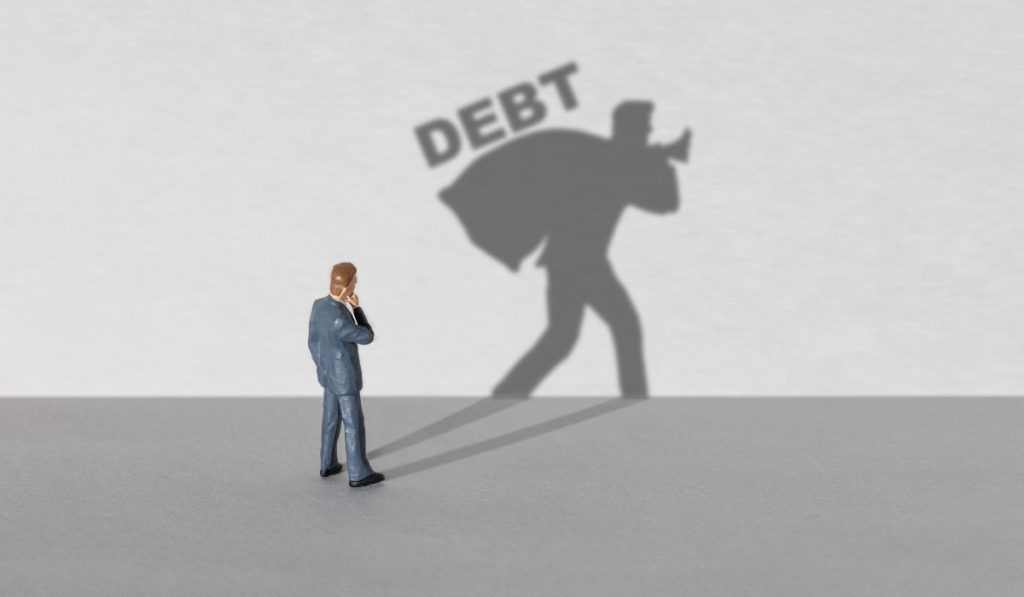The stubborn global inflation, coupled with looming price hikes following the Israel-Hamas war, is now causing financial challenges to many individuals and organizations. What’s more alarming is that many didn’t get a pay rise despite these financial crises.
This challenge has caused a growing demand for fast-cash loans. They‘re undoubtedly the go-to solution for many people in a financial bind but need quick cash to make ends meet and pay for other liabilities.
Cash advance loans and personal loans are two of the most common ways to borrow money immediately. In this article, we’ll determine the better option for your current situation.
| Aspect | Cash Advance | Personal Loan |
| Definition | A short-term, high-cost loan obtained through a credit card or cash from an ATM. | A medium to long-term loan typically granted by a financial institution with a fixed repayment schedule. |
| Borrower | Usually associated with credit cardholders. | Open to anyone who meets the lender’s eligibility criteria, regardless of credit card ownership. |
| Access Method | Typically accessed via ATM withdrawals or credit card transactions. | Applied for through a formal loan application process. |
| Interest Rate | Typically has a high, variable interest rate, often higher than standard credit card rates. | Usually offers lower, fixed interest rates compared to cash advances. |
| Loan Amount | Limited to a percentage of the credit card’s available credit limit. | Typically allows for larger loan amounts based on the borrower’s creditworthiness and income. |
| Repayment Schedule | Minimum payments are due monthly, but there’s often no fixed repayment schedule. | Typically requires fixed monthly payments until the loan is paid off. |
| Credit Check | Usually no separate credit check required, as it’s tied to the credit card’s terms. | Generally involves a credit check to assess creditworthiness. |
| Fees and Charges | May involve cash advance fees, ATM fees, and high-interest charges. | May have an origination fee, but often comes with lower associated fees. |
| Term | Short-term, meant to be paid back quickly, often within a month or two. | Medium to long-term, ranging from a few years to several years. |
| Purpose | Used for immediate, small-scale, and often urgent cash needs. | Suitable for planned expenses, such as debt consolidation, home improvement, or major purchases. |
| Risk of Debt Cycle | High risk of getting trapped in a debt cycle due to high costs and no fixed repayment schedule. | Lower risk of debt cycle as it comes with a structured repayment plan. |
| Impact on Credit Score | Impact on credit score depends on timely payments and credit utilization. | Impact on credit score can be positive if payments are made on time and as agreed. |
| Approval Speed | Quick approval, usually instantly if the credit card is in good standing. | May involve a longer approval process, including credit checks and document verification. |
Cash Advance
If you prefer a loan that can be repaid within a few days or weeks and doesn’t go through the stringent application process of a traditional loan, a cash advance loan is your best bet. It has different forms, including credit card cash advances and payday loans.
A cash advance is one of the quick and easy loans you can get. It’s a short-term, unsecured loan that usually doesn’t have requirements. If there is, it’s not that hard to comply. That’s why it approves loans and even disburses funds fast.
Take a credit card cash advance, for example. As its name implies, it’s a loan borrowed against your credit card account. Its main advantage is that it doesn’t require anything, including a credit check. You only have to go to the nearest ATM and withdraw it using your credit card. Alternatively, you can also personally visit your bank and withdraw the funds there.
A credit card cash advance has no requirements because it’s still considered a regular credit card transaction despite being a loan. The problem is that it often has high interest, higher than standard credit card purchases.
Even worse, this interest starts to accrue immediately. In other words, this option can quickly spiral into a much larger debt and have you get stuck in it, so it’s in your best interest to approach it with caution.
Photo by Yan Krukau from pexels.com
Personal Loans
A personal loan is a good option if you want a borrowing option that can be used in any way. It can cover medical emergencies, funerals, home renovations, car repairs, weddings, and vacations.
Like a cash advance, it’s typically unsecured, so its application process, approval, and fund disbursement are fast, almost instantaneous. Many lenders boast instant approval and funding of their loans as quickly as a few seconds.
However, a personal loan has benefits that a cash advance doesn’t have. It often has a longer repayment period, which is helpful for those who have difficulty making repayments after borrowing.
Another advantage of a personal loan is its lower rates than a cash advance. Its interest ranges from 6.99% to about 35.99%, while some cash advances, particularly payday loans, can ridiculously go as high as 664%.
The reason for this lower interest rate is credit checks. A credit score determines how much interest you’ll likely receive, so personal loan lenders often require it. In general, to qualify for a personal loan, you need a credit score of at least 610-640. To enjoy a very low interest rate, a score of 690 or higher is recommended.
Cash Advance vs. Personal Loans: Which to Use?
Before choosing between a cash advance and a personal loan, there are deciding factors you need to consider first. These include the amount you need, its urgency, the repayment period, and your credit score.
Overall, choose a cash advance if:
- You need the funds as soon as possible. As mentioned, getting a cash advance from an ATM is the easiest and fastest route to access quick cash.
- You can pay it off quickly. Always mind that its interest and other fees are prohibitively expensive. Assess your financial capability first and see if you can comfortably pay it off in a short period on top of your other expenses.
Alternatively, choose a personal loan if:
- You’re not in a hurry. Some personal loans have a longer approval process because other lenders require and have to assess solid financial records.
- You have a good credit score. Anyone with a high credit score can automatically qualify for a loan with the lowest interest rates and fees. It also shortens the loan approval process, resulting in faster disbursement of funds.
- You need larger funds. The borrowing amount of a personal loan can range from $1,000 to $100,000. It can still go higher, depending on your creditworthiness. A cash advance, on the other hand, is usually capped at $50,000.
Final Thoughts
Cash advances and personal loans can provide immediate financial backing whenever we’re in dire straits. While they’re both fast-cash loans, they still have individual differences. In general, cash advances are best for immediate financial needs for a short time, while personal loans are best for bigger financing needs.
- How To Buy And Use Amazon Gift Card - July 5, 2025
- Does Taco Bell Take Google Pay? - July 5, 2025
- What Happens To My Stocks If Robinhood Goes Under? - July 5, 2025



